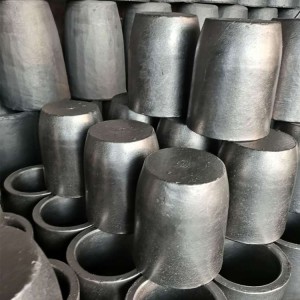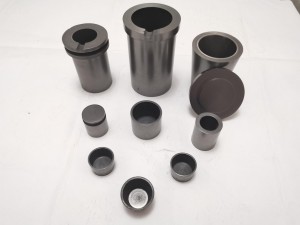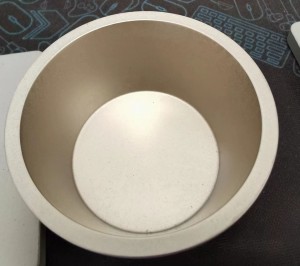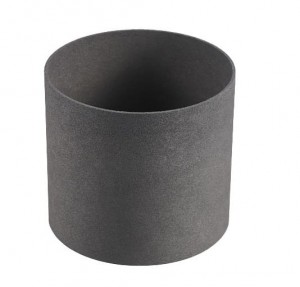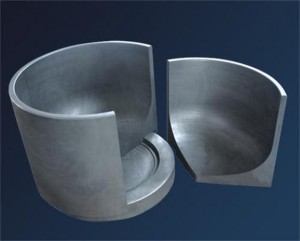Graphite crucibles can be divided into many types according to different materials, structures and uses . The following are several common types of graphite crucibles and their characteristics:
1. Clay Graphite Crucible
Material composition: Made of a mixture of natural graphite and refractory clay.
Features:
It has good thermal shock resistance and is suitable for environments with large temperature changes.
The cost is low and it is suitable for small and medium-sized smelting operations.
Suitable for smelting non-ferrous metals such as aluminum, copper, zinc, etc.
Applications: Commonly used in small foundries, laboratories and precious metal smelting.
2. Pure Graphite Crucible
Material composition: Made of high-purity graphite without other additives.
Features:
Excellent thermal conductivity, able to transfer heat quickly and evenly.
It has excellent high temperature resistance and is suitable for smelting high melting point metals (such as gold, platinum, etc.).
It has high chemical stability and is not easy to react with molten metal.
Application: Widely used in precious metal smelting, semiconductor material production and laboratory research.
3. TAC Coated Graphite Crucible
Material composition: A special TAC (anti-oxidation and anti-corrosion) coating is applied on the surface of the graphite crucible.
Features:
It has higher wear resistance and corrosion resistance, which prolongs the service life of the crucible.
Suitable for high-intensity use in high temperature and corrosive environments.
Application: Mainly used in industrial smelting, electronic material production and high temperature experiments.
4. Porous Graphite Crucible
Material composition: Made of porous graphite material with uniform pore structure.
Features:
It has good air permeability and filtering performance.
Suitable for applications where gas or liquid permeation is required.
Application: Commonly used in impurity filtration, gas diffusion experiments and special smelting processes in metal smelting.
5. Silicon Carbide Graphite Crucible
Material composition: Made of a mixture of graphite and silicon carbide.
Features:
It has extremely high hardness and wear resistance.
Excellent high temperature resistance, suitable for long-term high temperature operation.
Application: Mainly used for smelting high melting point metals such as iron and steel.
6. Isostatic Pressed Graphite Crucible
Material composition: High-density graphite crucible made by isostatic pressing technology.
Features:
High density, uniform structure and good thermal shock resistance.
Long service life, suitable for high-precision melting.
Application: Used in semiconductor materials, single crystal silicon production and laboratory research.
7. Composite Graphite Crucible
Material composition: Made of graphite and other high-performance materials (such as ceramic fiber).
Features:
Combining the advantages of graphite and other materials, it has higher strength and heat resistance.
Suitable for melting needs in special environments.
Application: Used in high temperature alloy smelting and special industrial fields.
8. Lab-Scale Graphite Crucible
Material composition: Usually made of high-purity graphite.
Features:
Small size, suitable for laboratory research and small batch melting.
High precision, suitable for melting of high purity materials.
Applications: Used in laboratory research, precious metal analysis and materials science experiments.
9. Industrial-Scale Graphite Crucible
Material composition: Made of high-strength graphite or composite materials.
Features:
Large size, suitable for large-scale industrial production.
Strong durability, suitable for long-term high temperature operation.
Application: Used in metal smelters, foundries and electronic material production.
10. Customized Graphite Crucible
Material composition: Customized materials, sizes and coatings according to customer needs.
Features:
High flexibility to meet special process requirements.
Suitable for special industries or experimental needs.
Application: Used for special metal smelting, high temperature experiments and industrial customization needs.
How to choose a crucible?
Melting materials: Different metals require different types of crucibles. For example, pure graphite crucibles are usually used for melting gold.
Operating temperature: Make sure the crucible can withstand the highest temperature required.
Crucible size: Choose the appropriate size according to the amount of melting.
Coating requirements: If higher wear resistance and corrosion resistance are required, TAC coated graphite crucibles can be selected.
Summarize
There are many types of graphite crucibles, each with its own unique material composition, performance characteristics and applicable scenarios. Choosing a suitable graphite crucible requires considering factors such as smelting materials, temperature requirements, use environment and budget. Whether it is smelting gold, industrial production or laboratory research, graphite crucible is an efficient and reliable tool.
Post time: Feb-19-2025

